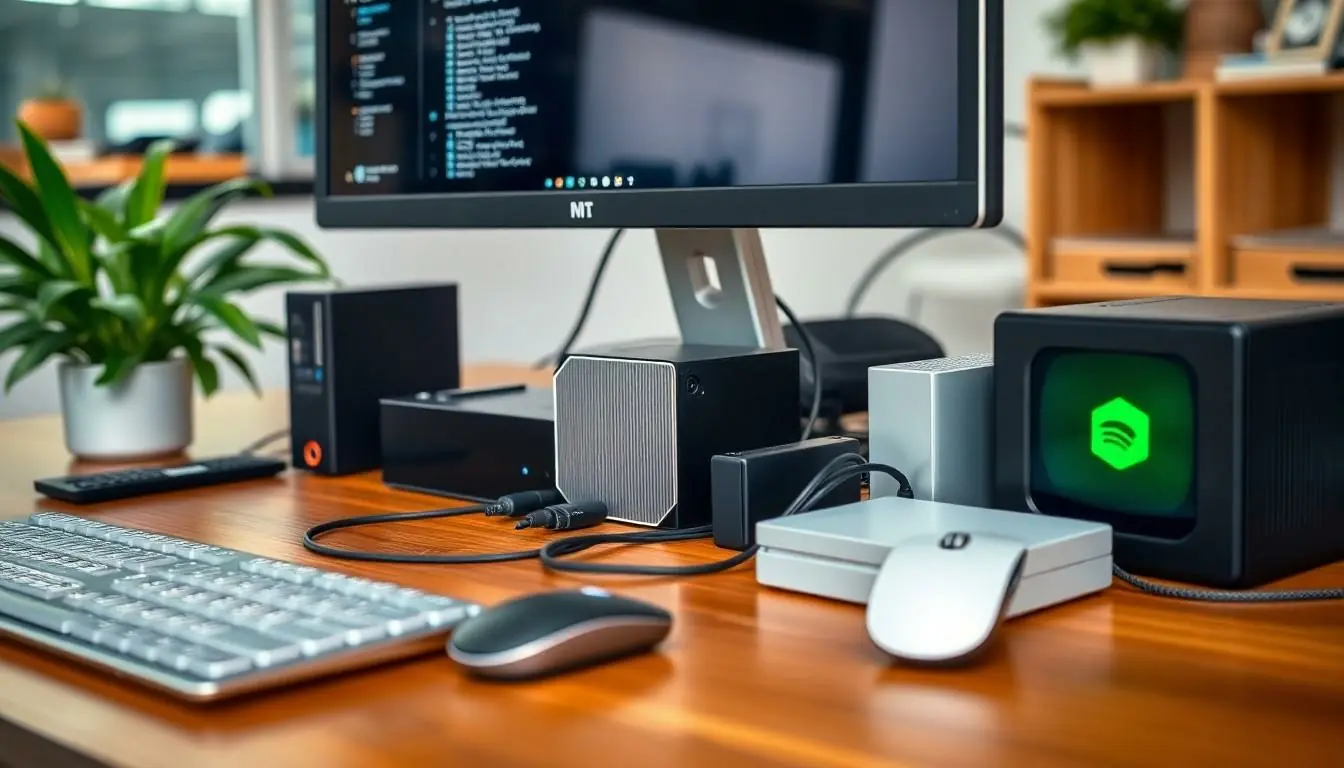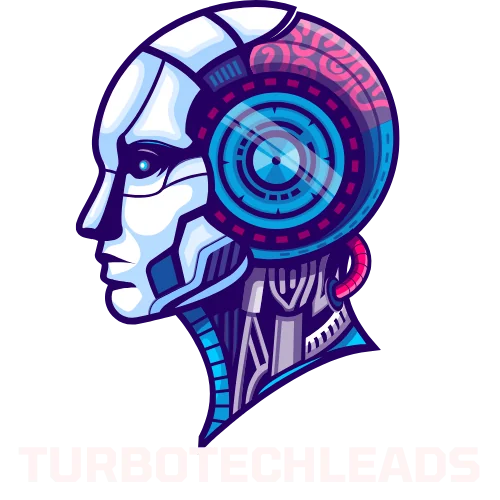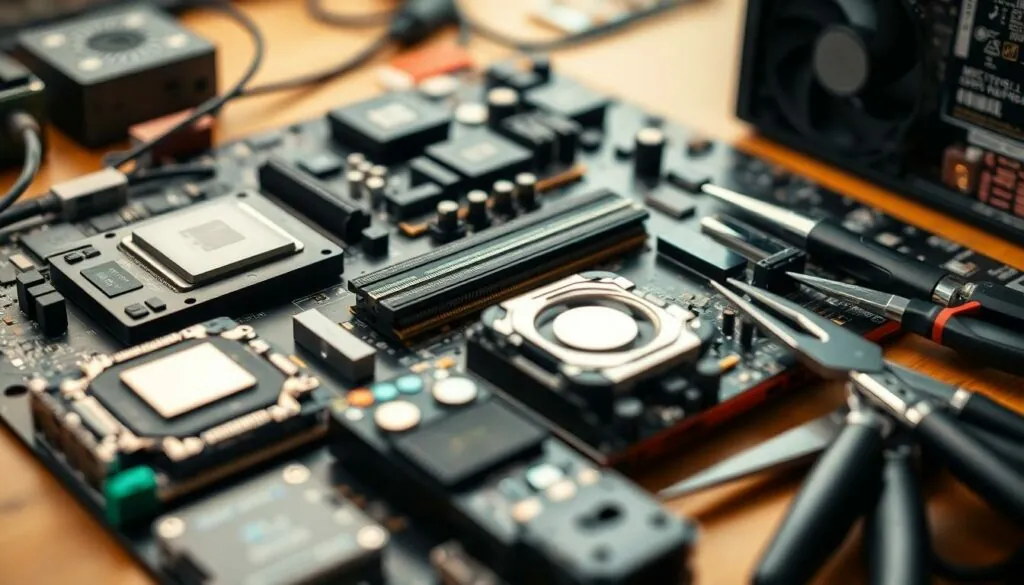Table of Contents
ToggleIn the vast universe of technology, computer hardware is the unsung hero. It’s the stuff that makes the magic happen, the silent workhorse behind every click and scroll. But let’s face it: navigating the world of computer components can feel like trying to solve a Rubik’s Cube blindfolded. From motherboards to graphics cards, the choices can be overwhelming.
Overview of Computer Hardware
Computer hardware includes numerous physical components that comprise a computer system. Key elements often consist of the central processing unit (CPU), also known as the brain of the computer. Memory modules play a vital role in the performance of the system, storing data temporarily for quick access.
Storage devices like hard disk drives (HDD) and solid-state drives (SSD) provide long-term data storage solutions. Input devices such as keyboards and mice enable user interaction, while output devices like monitors and printers present processed information. Motherboards serve as the main circuit board, linking various components for communication.
Graphics processing units (GPUs) enhance visual performance, especially in gaming and graphic design applications. Power supply units (PSUs) convert electrical power and distribute it to other components. Cooling systems, including fans and heatsinks, maintain optimal temperatures to prevent overheating.
Peripheral devices add unique functionality to computers, broadening their capabilities. External drives, webcams, and speakers exemplify peripherals that improve user experience. Each of these components contributes significantly to overall performance.
Recognizing these key types of hardware aids in building or upgrading systems effectively. Understanding the roles of each element streamlines the selection process while ensuring compatibility. By prioritizing the right components, it becomes feasible to achieve desired performance levels in any computing task.
Types of Computer Hardware

Computer hardware includes various components that collectively enable a computer system to function effectively. Each type plays a specific role in the overall performance.
Input Devices
Input devices allow users to interact with and control the computer. Keyboards serve as primary tools for text input, while mice facilitate navigation. Some users prefer touchscreens for direct interaction, offering versatility in usage. Scanners convert physical documents into digital form, enhancing productivity. Game controllers provide specialized input for gaming, catering to a diverse range of preferences. Microphones capture audio, supporting voice commands and recordings. Understanding these devices promotes efficient user engagement with computing systems.
Output Devices
Output devices present information processed by a computer. Monitors display visual content, crucial for everyday tasks like browsing or gaming. Printers produce hard copies of documents and images, serving both home and office needs. Speakers deliver audio output, enhancing multimedia experiences. Projectors extend visual content to larger screens, suitable for presentations or home theater setups. Each device addresses different types of content, ensuring users receive information in various formats.
Storage Devices
Storage devices retain data for retrieval and use. Hard Disk Drives (HDDs) offer large storage capacities, making them cost-effective for bulk data. Solid State Drives (SSDs) provide faster access speeds, improving overall system responsiveness. USB flash drives allow for portable data storage, ideal for transferring files easily. External hard drives offer additional storage solutions, catering to backup needs. Understanding the differences between these devices helps users choose the right option for their requirements.
Processing Units
Processing units are crucial for executing tasks and running applications. Central Processing Units (CPUs) serve as the brain of the computer, handling main processes with speed and efficiency. Graphics Processing Units (GPUs) specialize in rendering images and videos, enhancing performance for gaming and graphic design. Multi-core processors provide improved multitasking capabilities, making them ideal for demanding applications. Each processing unit type significantly impacts the performance and efficiency of computing tasks. Selecting the appropriate unit ensures optimal operation tailored to specific needs.
Importance of Identifying Hardware Types
Identifying hardware types ensures effective system performance. Each component plays a unique role, contributing to the overall functionality of a computer. The central processing unit (CPU) serves as the brain, executing calculations and managing tasks. Memory modules store data that the CPU accesses quickly, affecting overall speed.
Storage devices, like hard disk drives (HDD) and solid-state drives (SSD), are essential for data retention. Input devices allow users to communicate with the computer, while output devices relay information back. Understanding the distinctions between these hardware types streamlines the selection process when building or upgrading systems.
Compatibility among components directly influences the effectiveness of computer systems. A well-matched motherboard supports connected devices optimally. Graphics processing units (GPUs) enhance visual performance, crucial for gaming and design tasks. Power supply units (PSUs) must meet requirements to ensure stable operation.
Peripheral devices expand functionality, improving user interactions significantly. Knowledge of available hardware options enables users to tailor systems to specific needs. A solid understanding of hardware types is critical for achieving desired performance levels in computing tasks.
Common Misconceptions About Hardware
Many people confuse hardware and software, assuming they are interchangeable. Hardware refers to the physical components of a computer, while software encompasses programs and applications that run on those components. Understanding this distinction is key to grasping the overall functionality of a computer system.
Another common misconception involves thinking all hardware components are easily upgradeable. While many components such as RAM and graphics cards can be upgraded, certain parts like CPUs and motherboards require compatibility checks. It’s essential to research compatibility before purchasing new hardware.
Users often believe that more expensive hardware equates to better performance. Price doesn’t always correlate with the best choice for specific needs. For example, a high-end GPU may benefit gaming but might be excessive for simple tasks like browsing the web.
Some individuals think that all memory is the same. Distinctions exist between various types of memory, such as RAM and storage. Random Access Memory (RAM) impacts performance during active tasks, whereas hard drives or solid-state drives retain data long-term.
There’s also the idea that peripherals like keyboards and mice don’t impact performance. Many don’t realize that the quality of input devices can influence productivity and user experience dramatically. Choosing ergonomic options can improve comfort and efficiency over time.
Lastly, a prevalent myth is that cooling systems aren’t necessary for all setups. Overheating can damage components, making effective cooling crucial for both high-performance and entry-level systems. Regular maintenance of cooling systems ensures longevity and reliability of computer hardware.
Understanding the various types of computer hardware is crucial for anyone looking to build or upgrade a system. Each component serves a specific purpose that directly impacts overall performance and user experience. From the CPU and memory modules to input and output devices, every part plays a vital role in ensuring a computer operates efficiently.
By recognizing the importance of compatibility and the unique functions of these components, users can make informed decisions that align with their specific needs. This knowledge not only enhances computing efficiency but also helps avoid common pitfalls when selecting hardware. Ultimately, a well-chosen combination of hardware can lead to a more powerful and responsive computing experience.



